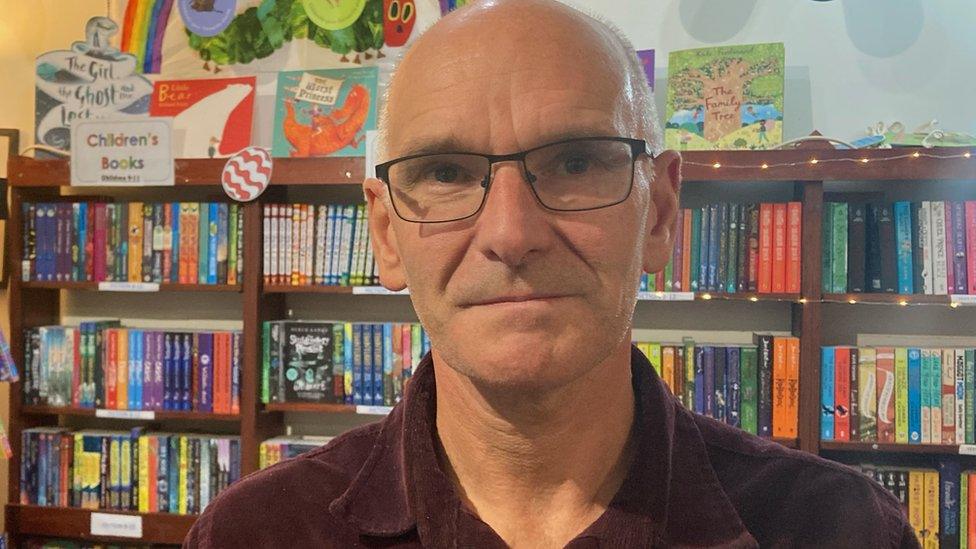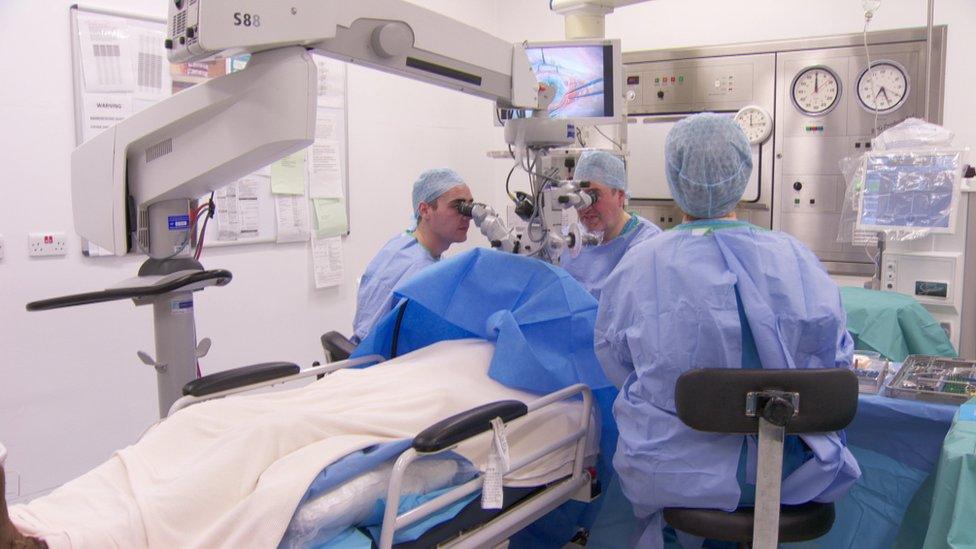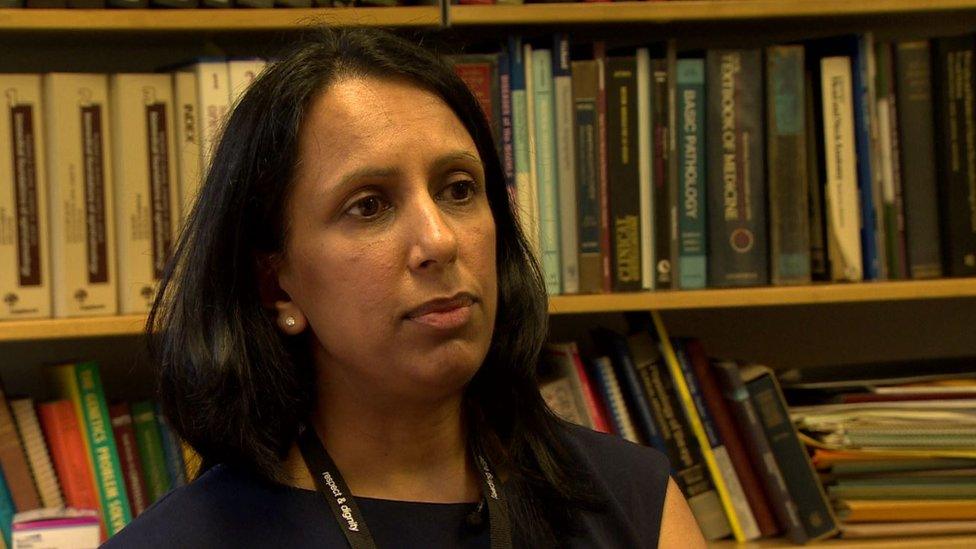Organ Donation: Cornea transplants 'transformative and so important'
- Published

David Torrans had the first of four corneal transplants in 1984
A bookshop owner who has had four corneal transplants said they not only transformed his vision but his life.
David Torrans was diagnosed with keratoconus as a teenager - a condition that causes the cornea to weaken, get thinner and change shape.
It eventually impairs the eye's ability to focus properly.
A Belfast consultant ophthalmic surgeon said patients are having to wait longer for transplants because of a shortage of available corneas.
Figures from the Public Health Agency (PHA) show that only a third of the number of corneas needed for transplants in Northern Ireland in 2022 were donated by people in Northern Ireland.
Dimple Patel, who specialises in corneal disease, said the myths and squeamishness around organ donation needed to be dispelled.
The cornea is the clear outer layer at the front of the eyeball which lets light into your eyes, enabling you to see.
'Transplant filled me with hope'
For David, his eyesight became "fuzzy" and made "life difficult at times".
"We're talking about not being able to see very much in front of you - distance-wise or reading-wise," he said.
"Reading, driving was out of the question for quite a while, sport. It was something you got used to, but it made it difficult to carry on a normal life.
"I was quite lucky that one eye was always worse than the other.
"It was when both eyes started to become bad when difficulties could arise," he said.

Keratoconus affects between one in 3,000 to one in 10,000 people and can potentially cause poor vision and result in the need for a corneal transplant.
The exact cause of the condition is unknown.
It is one of the most common reasons for corneal transplantation in younger patients.
When David was about 16, he noticed his eyesight deteriorating.
A corneal transplant was the only way to improve his vision and he was put on a transplant list.
"You're upset but you deal with it," he said.
"The fact that there was a solution, and something could be done to cure it or to help it or to rectify it, it filled me with hope."

The surgical procedure takes less than an hour
The owner of No Alibis bookshop had his first corneal transplant in 1984 in his left eye.
He has had three more transplants - a further two in his left eye and one in his right - which he said have "been wonderful" as they've transformed his vision each time.
"I'm in a bookshop doing what I love, talking about books, reading books, being surrounded by books," he told BBC News NI.
"There was a period when being in here was quite frustrating, simply because I can't pick this [book] up and look at it. I can't read it. Now everything's fine," he said.
'Opportunity to see clearly again'
David said the gift of donating a cornea, or any organ, "is transformative and so important" and would urge people not to feel squeamish about it.
"I can understand that initial reticence and hesitation in wanting to donate corneas because it's the one organ in our body we can donate that we can actually visualise, no pun intended, and see.
"People can get very emotional and emotive about it," he said.
"To give someone the opportunity to see clearly again, to be able to visualise what's around them, is as life-changing as any other organ donation," he said.
According to NHS Blood and Transplant (NHSBT), corneas are the most common organ or tissue that people choose not to donate.
When registering a decision to donate, 81% of people choose to donate all organs and tissues.
About 19% choose to specify/restrict which organs or tissues can be used. Of those, 63% will choose not to donate corneas.
This amounts to 11.5% of all donor registrations being restricted for eyes.
It is not yet known what effect new opt-out organ donation rules, in place in Northern Ireland since June, will have on corneal donation rates.
Dimple Patel said corneal transplants are one of the most performed transplants in the UK and across the world, and are performed weekly in the Belfast Trust.

Dimple Patel said corneal transplants can be life-transforming and offer recipients greater independence
Ms Patel said their biggest problem is the availability of corneal tissue.
"We're a net importer rather than net exporter. We receive more corneas for donation than we send to the eye banks from the population in Northern Ireland."
She said there is a fear factor with regards to corneal donation, which is one of the biggest reasons Northern Ireland has low donation rates.
"Patients are quite happy to donate many parts of their body, but the eyes are one of the parts that they're very squeamish about or not willing to donate.
"From each eye you can have up to nine recipient patients benefiting. So not only the cornea but also the white wall of the eye is useful in patients and there are research benefits as well," said Ms Patel.
Once a cornea is donated, the eye is harvested and sent to a NHSBT eye bank in England.
The eyes are checked for disease and infection before they are sent out for donation.
Ms Patel said the longest wait on her list on a routine basis is just over a year.
However, she said no patient should be waiting much longer than six months for a corneal transplant because waiting longer also has consequences regarding the success and the outcome of the transplantation.